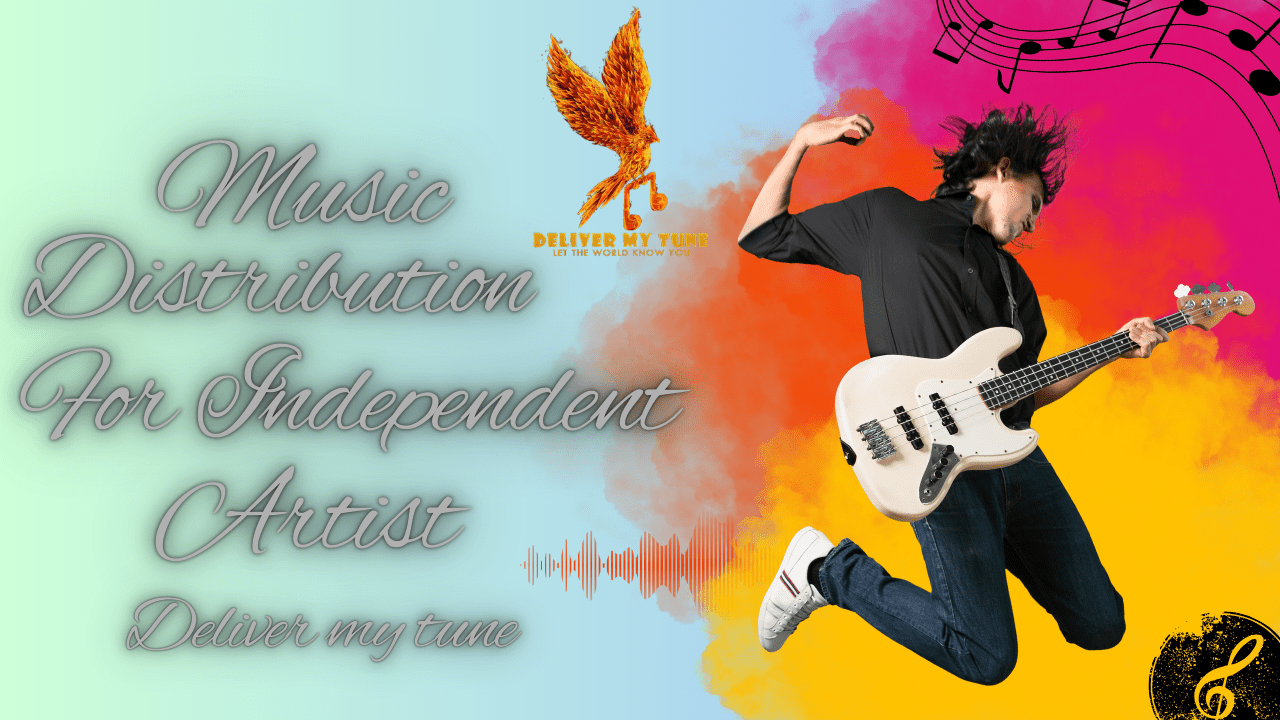The world of music has transformed dramatically in the past two decades, making it easier than ever for independent artists to share their music with global audiences. Music distribution for independent artists is now a critical part of any artist’s journey. With numerous platforms available, you don’t need a record label to get your music on Spotify, Apple Music, or Amazon Music. However, understanding the nuances of music distribution is key to success.
This guide will help you navigate the process, pick the right platforms, and offer actionable strategies to ensure your music reaches the right audience. Whether you’re just starting or looking to refine your distribution process, this blog is your go-to resource.
What is Music Distribution?
At its core, music distribution is the process of getting your music from the studio to your listeners. This includes both physical formats like vinyl and CDs and digital platforms such as Spotify, YouTube Music, and Tidal.
For independent artists, digital music distribution is particularly important as it provides a cost-effective and scalable way to reach a global audience. With the right strategies, your music can find listeners across continents without requiring the support of a record label.
Why is Music Distribution Important for Independent Artists?
Music distribution bridges the gap between creation and audience, enabling artists to:
- Expand Reach: Platforms like Spotify and Apple Music make it possible for anyone, anywhere, to discover your music.
- Earn Royalties: Streaming services pay artists based on the number of streams their music receives.
- Build Fan Engagement: Tools like Spotify for Artists provide insights into listener behavior, helping artists build a stronger connection with fans.
- Control Their Careers: Unlike traditional deals with record labels, independent artists retain control over their music and branding.
In today’s competitive industry, effective music distribution is as crucial as the quality of your songs.
Types of Music Distribution Services
Understanding the types of music distribution is essential for making the right choice.
- Traditional Distribution
This involves distributing music in physical formats like CDs or vinyl. While it’s less common today, it remains relevant for artists with niche audiences who prefer physical media. - Digital Distribution
Digital distribution dominates the industry, allowing artists to upload their music to streaming platforms and online stores. Services like Deliver My Tune and DistroKid specialize in digital distribution for independent artists. - Hybrid Distribution
Some services offer a mix of physical and digital distribution, catering to diverse audience preferences.
Best Platforms for Independent Artists
Choosing the right platform is crucial for successful distribution. Here are some popular platforms:
- Deliver My Tune: Offers seamless distribution to 100+ platforms, royalty collection, and additional services like AI mastering.
- DistroKid: Known for unlimited song uploads at a flat fee.
- TuneCore: Great for artists who want detailed reports and higher control over royalties.
- CD Baby: Popular for its wide network and added features like physical CD distribution.
- Amuse: A free platform that provides basic distribution services and optional paid upgrades.
Each platform comes with its pricing model and features. Research thoroughly before making your choice.
How to Distribute Your Music Effectively
Step 1: Prepare Your Music
Make sure your tracks are professionally mixed and mastered. Platforms like Deliver My Tune offer affordable AI mastering services for artists.
Step 2: Choose a Distributor
Research platforms based on pricing, royalty policies, and added features like playlist pitching and analytics tools.
Step 3: Upload Your Music
Submit your tracks along with metadata, artwork, and release dates. Ensure your artwork complies with guidelines like those outlined by Apple Music.
Step 4: Promote Your Music
Use tools like Spotify’s Countdown Pages to create pre-release hype. Combine this with targeted ads and social media campaigns.
Step 5: Monitor Performance
Use analytics tools to track how well your music is performing and tweak your strategies accordingly.
Challenges in Independent Music Distribution
Despite its advantages, there are challenges associated with music distribution for independent artists:
- Oversaturation: Millions of tracks are uploaded daily, making it hard to stand out.
- Royalty Transparency: Understanding royalty payments can be confusing for new artists.
- Playlist Inclusion: Getting featured on playlists requires effort and networking.
- Piracy Concerns: Unauthorized sharing of music can affect your earnings.
Tips for Successful Music Distribution
- Create High-Quality Music: Professional production can make or break your distribution success.
- Leverage Social Media: Platforms like Instagram and TikTok are excellent for promoting your music.
- Pitch to Playlists: Use services that specialize in playlist pitching to get more streams.
- Engage with Fans: Build a loyal fan base by interacting with your audience through live sessions and Q&A.
Trends in Music Distribution
The music industry is evolving rapidly. Here are some trends shaping the future of distribution:
- Blockchain Technology: Offers greater transparency in royalty payments.
- AI Tools: From mastering to playlist curation, AI is playing a bigger role in music.
- Direct-to-Fan Platforms: Bandcamp and Patreon allow artists to sell music directly to fans.
- Interactive Content: Features like Spotify’s Countdown Pages enhance fan engagement.
Legal Considerations for Independent Artists
Understanding copyright laws is crucial for protecting your music. Register your songs with a copyright office, and consider using watermarking services to prevent piracy. Services like Deliver My Tune also offer assistance with copyright management.
Success Stories of Independent Artists
Several independent artists have achieved global success through effective music distribution:
- Chance the Rapper: Leveraged free distribution and social media to build a massive fan base.
- Billie Eilish: Released music online with her brother, gaining viral success before signing with a label.
- Ritviz: An Indian artist who used Spotify and YouTube to amass a loyal fan following.
FAQs About Music Distribution
Q1. How much does music distribution cost?
Most platforms charge a flat fee or take a percentage of your royalties. Choose based on your budget and goals.
Q2. Can I switch distributors later?
Yes, but ensure your contract allows for easy migration without affecting your catalog.
Q3. How long does it take to get my music online?
Typically, it takes 1–3 days, but some platforms offer expedited services for a fee.
Conclusion
Music distribution for independent artists is more accessible than ever. With the right tools, platforms, and strategies, you can ensure your music reaches a global audience while retaining full control over your career. Embrace the opportunities, invest in quality, and stay consistent. Your journey to music success starts with effective distribution.
Related Articles:
For further reading, explore these related articles:
- Top 7 TikTok Alternatives
- YouTube Music Updates: Everything You Need to Know in 2024
- 5 Elements Every Musician Must Consider When Creating Their Goals
For additional resources on music marketing and distribution, visit Deliver My Tune.





